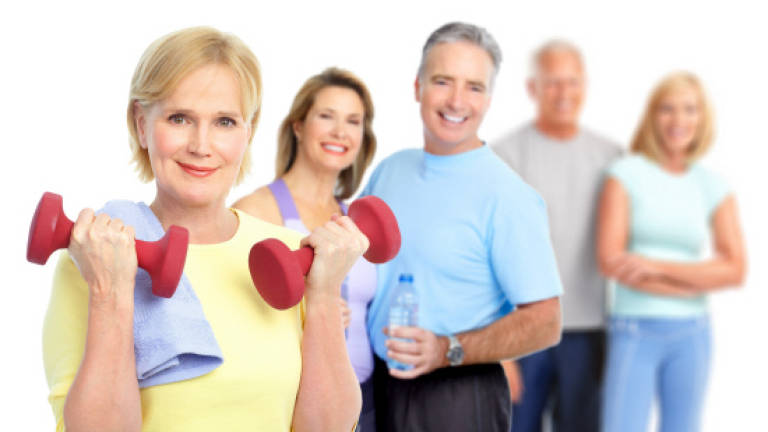Fitness in the City - Getting older & better

AN inevitable change that comes with ageing is the progressive decline in skeletal muscle mass with advancing years, a condition known medically as sarcopenia.
One simple explanation is that our cells do not regenerate as efficiently when we age, and that we lose the ability to effectively produce testosterone, the hormone that aids muscle growth and bone density.
Unless this decline is countered through exercise, it may lead to decreased strength and functionality.
At some point in your 30s, you start to lose muscle mass and function. Physically-inactive people can lose as much as 3% to 5% of their muscle mass each decade after age 30.
This explains why people who are advanced in age have difficulty in movement, a lack of muscles and joint tissue loss.
Old age problems are common, complex and costly, and take their toll. Giddiness, falling down and incontinence are examples of some of these geriatric problems.
Some, like sarcopenia, can be slowed down and perhaps reversed if treated in time with exercise and activity.
It is my opinion that many people are unaware that strength at an elderly age has to do with rituals and habits from an early age.
People don't realise that the stronger you are today will directly impact how strong you will be in the future, physically.
Ever wondered why that char koay teow seller you have been frequenting for years is still going strong at 70 years old?
It's likely because he has been constantly moving around for eight hours a day, every day for the past 60 years, working hard.
It is no secret that one of the best ways to stay strong is to exercise or, to be more precise, lift weights.
The fitness community has been preaching and practising this for a very long time now.
In fitness lingo, we call it a process of overload. It means doing a little more activity over a certain period of time, to challenge the body to become stronger and better.
That the body gets weaker by the year is a reality. The sooner you recognise this, and come face to face with reality and arrest the decline, the sooner you can reap the future benefits.
If you begin today, you will start seeing concrete results within a matter of several weeks. But the real benefits you want will come much later in life.
What happens to your body when you lift weights is not a complicated process.
Muscles get torn every single time a workout happens. The healing of the muscle fibres, ligaments and tendons is how we get stronger.
It is also of no benefit to modern society that automation and technology has made us move less. We are actually getting physically lazy with technology.
Here is a fact: muscles don't turn to fat; excess food intake turns to fat.
Consistently working existing muscle fibres in your body will eventually produce stronger, bigger muscles.
If your muscles are not stimulated to work, they gets weaker and shrink. We call this process 'atrophy'.
Create an activity habit. If you like fitness centres and can afford it, then go for it.
Walking, gardening, and housework are also everyday activity habits.
What's most important is to find ways to consistently challenge the body every day.
Traditional exercises still work. Push-ups, crunches (modified from sit-ups), pull-ups, squats, jumping jacks, lunges and burpees have been staple exercises for many years. They still work.
If you also have home exercise equipment – like a fitball and some weights – you can get a decent home fitness programme going.
Once in a while, add something new to your routine. Go for a hike, for example. Try indoor rock climbing – it's totally safe!
Try using some new exercise tools, like the TRX. Join a marathon or Hash Run. Try mountain biking.
Be active and stay strong. Enjoy life!
Let's be fit!
Jonathan Tan is the club manager of the Sports Toto Fitness Centre at Berjaya Times Square. He can be contacted at lifestyle.jonathan@thesundaily.com.